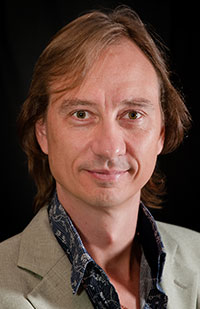Join us on Thursday, 18 March at 7:30pm GMT for a truly stellar online event in which we focus on the stars. You’ll hear from Emma Chapman of Imperial College London on the search for the first stars to exist in our Universe, Stuart Clark will explore how the stars have shaped the history of humankind and Meridith Joyce of The Australian National University will explore the recent mysterious behaviour of the star Betelgeuse.
About the talks
First Light
When it comes to understanding how the Universe began and grew up we are literally in the dark ages. In effect, we are missing the first one billion years from the timeline of the Universe. The Era of the First Stars represents the start of the cosmos as we experience it today, the time when the very first stars burst into life, illuminating the Universe one by one. Incorporating the very latest research into this branch of astrophysics, Emma Chapman’s talk sheds light on this time of darkness, telling the story of these first stars: why they were so unusual, how they are responsible for the creation of planets and even us, and how we are searching for their legacy today.
Beneath the night
From Stone Age to space age, people have looked up at the stars and been inspired by their beauty, their patterns, and their majesty. Beneath the Night explores history of humanity, told through our relationship with the night sky. From prehistoric cave art and Ancient Egyptian zodiacs, to the modern era of satellites and space exploration, Stuart Clark explores a fascination shared across the world and throughout millennia. It is one that has shaped our scientific understanding; helped us navigate the terrestrial world; provided inspiration for our poets, artists and philosophers; and it has given us a place to project our hopes and fears. This is the awe-inspiring story of the universe, and our place within it.
What’s up with Betelgeuse?
Objects in telescope may be closer than they appear! In Meridith Joyce’s talk we find that the red supergiant Betelgeuse is closer, smaller, and less massive than previously thought. We use mathematical models of the evolution of stars, high performance computers, and statistical techniques to show that Betelgeuse is burning helium in its core. In combination with estimates of Betelgeuse’s mass, this tells us about its remaining lifetime before the onset of a cataclysmic event – a supernova. Our models revise the timeline for this event from 10,000 to 100,000 years. This discovery was inspired by the “Great Dimming” of late November 2019, during which the red supergiant dropped to less than one third of its usual brightness. Though it turned out that Betelgeuse’s dimming was not caused by any physics within the star itself, this investigation led to the discoveries of how far away it really is, how far along it is in its evolution, and why the star pulsates in the first place.
About the speakers

Dr Emma Chapman is a Royal Society research fellow at Imperial College London. She is among the world’s leading researchers in search of the first stars to exist in our Universe, 13 billion years ago. She is involved in using and building radio telescopes across the world, aiming to make that elusive first detection. Emma is a respected public commentator on the radio, television and in print. Among other events, she has spoken at the Royal Institution, Cheltenham Science Festival, and New Scientist Live, and is the recipient of multiple commendations and prizes. Her book First Light: Switching on Stars at the Dawn of Time was published in November.

Dr Stuart Clark is an award-winning author and journalist. He is the co-chair of the Astrofest conference and a former editor of Astronomy Now. Stuart’s books have been translated into more than 20 languages. The Sun Kings, about 19th century solar astronomers, won the American Publishers’ Association prize for best work of astronomy/cosmology, was shortlisted by the The Royal Society in London for best popular science book of 2008 and won Italy’s Monselice Prize for best scientific translation. His latest book, Beneath the Night, explores the human fascination with the night sky and the way it has influenced culture, religion, art, science and philosophy. Stuart is a visiting fellow of the University of Hertfordshire. He is a consultant for New Scientist, the European Space Agency, and a columnist for The Guardian.

Dr Meridith Joyce is an RSAA Postdoctoral Fellow at the Australian National University in Canberra, Australia, and soon-to-be Lasker Fellow with NASA’s Space Science Telescope Institute in Balitmore, Maryland, United States. American by nationality, she earned a PhD in computational astrophysics from Dartmouth College and has since worked in South Africa, Australia, Japan, and Hungary. In 2021, she received a Marie Sklodowska-Curie Actions Widening Fellowship, a designation awarded to top scientists in any field, anywhere in the European Union. Dr Joyce’s work focuses on precision modeling of stars using the stellar structure and evolution software MESA, of which she is a developer. She lives with a British partner and will soon be reunited with her American dog.
Your virtual ticket provides live access to the presentation and gives you the opportunity to pose questions to the speakers. A replay will also be available. The presentation will be delivered by Zoom Webinar.
